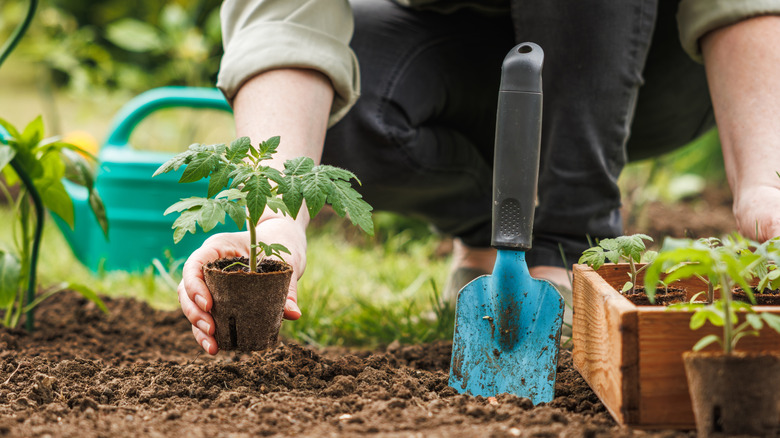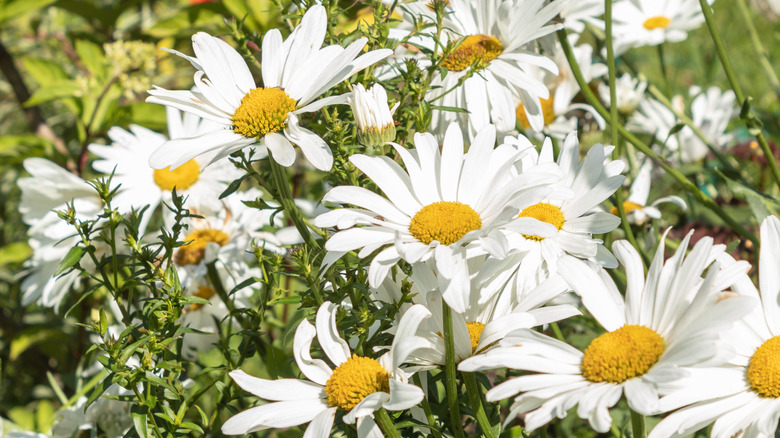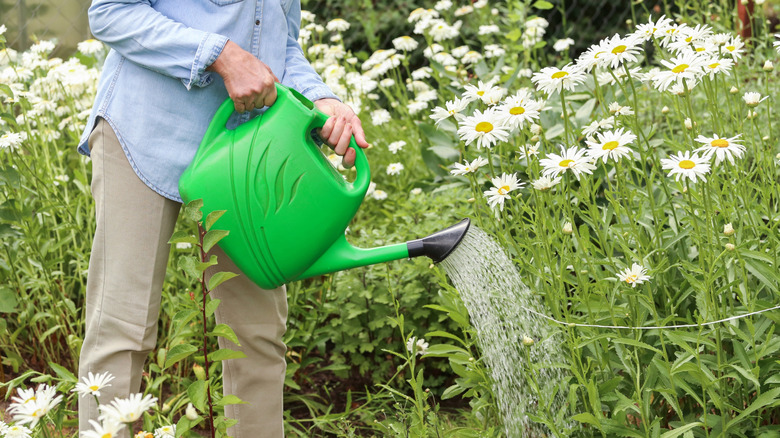The Soothing Herb You Should Plant To Naturally Improve Your Garden's Soil
Keeping your soil healthy can feel like a constant cycle of trial and error. You experiment with fertilizers, compost, or homemade fixes. Sometimes, they work, but often, you're left wondering what went wrong. If you're looking for a low-maintenance addition to complement these efforts, Roman chamomile (Chamaemelum nobile) may support your soil health and help you grow a healthy garden. Known for its calming properties in tea, chamomile offers surprising benefits when grown in the garden.
This fragrant perennial typically reaches just 3 to 6 inches tall and spreads up to 12 inches wide. It forms a soft, dense mat that fits easily into herb beds, flower borders, and vegetable patches. Roman chamomile blooms from June to September and produces small, daisy-like flowers that attract pollinators. But more than just a pretty groundcover, chamomile supports a thriving ecosystem in the garden. Here's how this herb can play a powerful role in improving your soil.
How chamomile supports and improves soil quality
Chamomile might seem like a soft, calming plant. But don't let its appearance fool you; it's a powerhouse in the garden. When you grow it along with organic fertilizers, it helps the soil hold onto water better, which helps your other plants get nutrients, especially during dry spells. Chamomile works with beneficial soil microbes, stimulating their activity and helping break down complex organic materials into nutrients like nitrogen, phosphorus, iron, and zinc that plants can readily absorb. This is particularly valuable if you're working to identify and treat nutrient deficiencies in your garden.
In soils with low pH, phosphorus can become difficult for roots to take up, but chamomile helps create a more balanced environment that supports better phosphorus availability. For even better results, try pairing it with a phosphorus-rich fertilizer and humic acid. Best of all, when chamomile and soil microbes are thriving together, your garden becomes less dependent on chemical fertilizers, leading to healthier plants, stronger soil, and a more sustainable garden overall.
Growing chamomile for healthier soil
Roman chamomile grows best in USDA Hardiness Zones 4 to 9. In cool summer climates (around 60 to 68 degrees Fahrenheit), you can sow seeds directly into the garden, which is often the easiest way to support strong roots and healthy growth. If you're using transplants, handle them gently, as chamomile has delicate roots. To reduce the stress on the roots, plant the entire pot or soil block directly into the ground. It prefers full sun but can also tolerate light shade.
The best type of soil for growing a herb like chamomile is well-draining with a slightly alkaline pH. This encourages healthy root development and supports the soil microbes responsible for improving soil structure and fertility. If your soil is compacted or heavy, mix in compost to improve drainage and texture. Keep the soil evenly moist, but avoid overwatering as excess moisture can affect the beneficial soil microbes. Chamomile grows well with vegetables like onions, cabbage, and cucumbers, which may benefit from improved flavor, healthier soil, and fewer pests when grown nearby.


